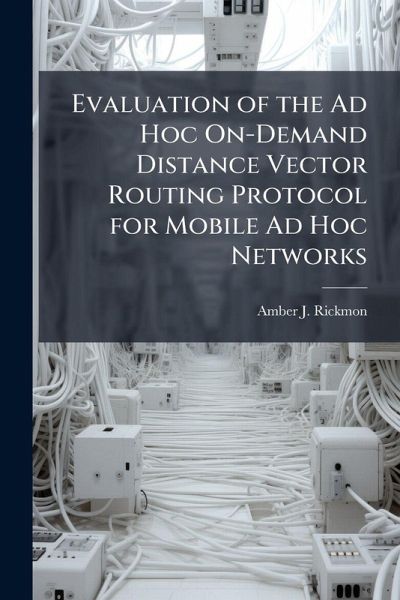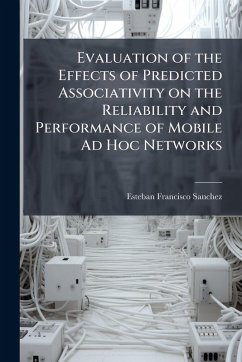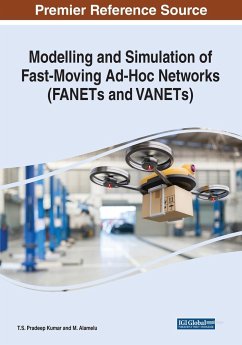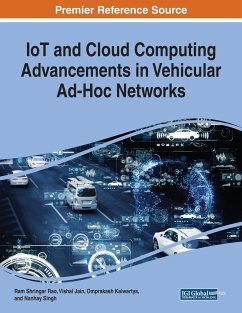
Evaluation of the Ad Hoc On-Demand Distance Vector Routing Protocol for Mobile Ad Hoc Networks
Versandkostenfrei!
Versandfertig in über 4 Wochen
15,99 €
inkl. MwSt.
Weitere Ausgaben:

PAYBACK Punkte
8 °P sammeln!
Routing protocols designed for wired networks cannot be used in mobile ad hoc networks (MANETs) due to the dynamic topology, limited throughput, and energy constraints. New routing protocols have been designed for use in MANETs, but have not been thoroughly tested under realistic conditions such as node movement, number of sources, the presence of obstacles, and node speed.This research evaluates the performance of ad hoc on-demand distance vector routing with respect to throughput, goodput ratio, end-to-end (ETE) delay, node pair packet delivery rate, and node pair end-to-end delay. It shows ...
Routing protocols designed for wired networks cannot be used in mobile ad hoc networks (MANETs) due to the dynamic topology, limited throughput, and energy constraints. New routing protocols have been designed for use in MANETs, but have not been thoroughly tested under realistic conditions such as node movement, number of sources, the presence of obstacles, and node speed.This research evaluates the performance of ad hoc on-demand distance vector routing with respect to throughput, goodput ratio, end-to-end (ETE) delay, node pair packet delivery rate, and node pair end-to-end delay. It shows these performance metrics vary significantly according to the choice of mobility model, number of sources, and the presence or absence of obstacles. The mobility model explains 68% of the variation in node pair packet delivery rate. The mobility model explains between 8% and 53% of variation in the other performance metrics. Obstacles explain between 5% and 24% of variation, and have the greatest effect on ETE delay. Finally, the number of sources explains between 8% and 72% of variation in node pair ETE delay, throughput, goodput ratio, and node pair packet delivery rate. The number of sources does not have a significant affect on ETE delay. This work has been selected by scholars as being culturally important, and is part of the knowledge base of civilization as we know it. This work was reproduced from the original artifact, and remains as true to the original work as possible. Therefore, you will see the original copyright references, library stamps (as most of these works have been housed in our most important libraries around the world), and other notations in the work. This work is in the public domain in the United States of America, and possibly other nations. Within the United States, you may freely copy and distribute this work, as no entity (individual or corporate) has a copyright on the body of the work. As a reproduction of a historical artifact, this work may contain missing or blurred pages, poor pictures, errant marks, etc. Scholars believe, and we concur, that this work is important enough to be preserved, reproduced, and made generally available to the public. We appreciate your support of the preservation process, and thank you for being an important part of keeping this knowledge alive and relevant.












